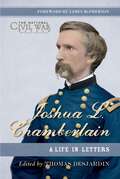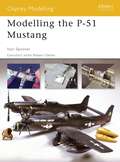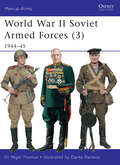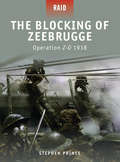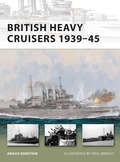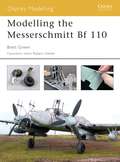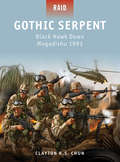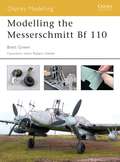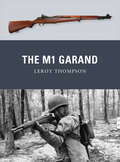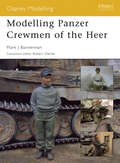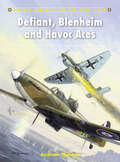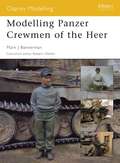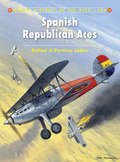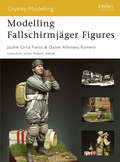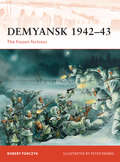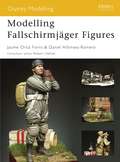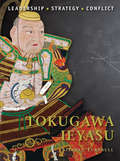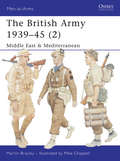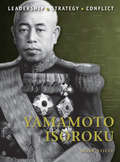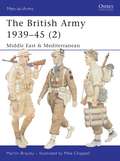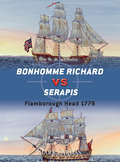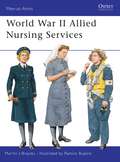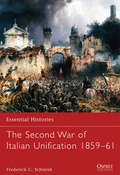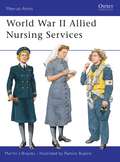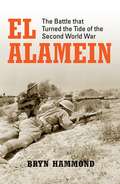- Table View
- List View
Joshua L. Chamberlain: The Life in Letters of a Great Leader of the American Civil War
by Thomas Desjardin The National MuseumHis life is a remarkable story of perseverance, tragedy and triumph. From an insecure young man with a considerable stutter who grew up in a small town in eastern Maine, Joshua Chamberlain rose to become a major general, recipient of the Medal of Honor, Governor of Maine and President of Bowdoin College. His writings are among the most oft-quoted of all Civil War memoirs, and he has become a legendary, even mythical historical figure. In 1995, the National Civil War Museum acquired a collection of approximately three hundred letters written by or sent to Chamberlain from his college years in 1852 to his death in 1914. Author Thomas Desjardin puts Chamberlain's words in contemporary and historical context and uses this extraordinary collection of letters to reveal – for the first time – the full and remarkable life of Joshua Chamberlain
Modelling the P-51 Mustang (Osprey Modelling)
by Stan SpoonerThe North American P-51 Mustang had a humble genesis as a British request for single engine escort fighters but became, arguably, World War II's most important fighter aircraft. It had incredible endurance, fantastic maneuverability and excellent high-altitude performance, and served throughout World War II and beyond. This aircraft is one that holds a great deal of interest for many modellers around the world. This book takes the modeller from the aircraft's beginnings to the ultimate manifestation of this elegant and deadly bird, the F-82 G/H Twin Mustang. Special attention is paid to painting both both interiors and exteriors, with a wide range of different schemes used.
World War II Soviet Armed Forces: 1944–45 (Men-at-Arms #469)
by Nigel ThomasThis book presents a detailed analysis of the Soviet armed forces during the final days of the war, covering the soldiers that successfully turned the tide against the Nazi onslaught and pushed it back into Germany itself. This final part of the series documents the Red Army's push through Germany to Berlin, which eventually culminated in the surrender of the German forces to the Allies in 1945. It also offers a detailed breakdown of all the armed forces that conducted the offensive campaigns on the Eastern Front, including the army, air force, paratroopers, navy and NKVD troops. Its colourful illustrations also include the uniforms and organizations of the Russian forces serving against Japan until the eventual surrender of all Japanese Imperial forces in August 1945.
The Blocking of Zeebrugge: Operation Z-O 1918 (Raid #7)
by Giuseppe Rava Donato Spedaliere Stephen PrinceOn the night of 22–23 April 1918 the Royal Navy carried out a raid on the German held ports of Zeebrugge and Ostend – Operation Z-O. Under the cover of clouds and smoke, over 70 ships and an assault force of 1,800 Royal Marines embarked on a daring mission which involved a vicious battle of incredible intensity. However, despite the gallant and courageous efforts of the attackers, 11 of whom were later awarded the Victoria Cross, the raid was only partly successful. Discover the successes and failures of this dramatic raid in this in-depth account, complete with specially commissioned battlescene artwork. The author reveals how despite failure, the raid demonstrated to Germany that Britain was still capable of offensive action, even as its armies were being forced back.
British Heavy Cruisers 1939–45 (New Vanguard #190)
by Angus Konstam Mr Paul WrightThe idea of a heavy cruiser emerged in the aftermath of World War I, and was closely linked to the limits set by the inter-war Washington Naval Treaty. The pre-World War I concept of armoured cruisers had been abandoned, but in their stead the Admiralty saw a place for powerful cruisers, able to patrol the sea lanes of the British Empire, and which were well-armed enough that they could destroy enemy commerce cruisers. The result was a group of British warships, known as the 'Washington Treaty Cruisers', that did everything the Admiralty wanted, but which conformed to the limits imposed by the treaty. These impressive cruisers were high-sided, spacious and stately – perfect peacetime ambassadors for British power. In war they also packed a considerable punch. During World War II the Royal Navy's thirteen heavy cruisers saw service in every theatre of the war, whether facing the Bismarck in the North Atlantic or enduring kamikaze attacks in the Pacific.
Modelling the Messerschmitt Bf 110 (Osprey Modelling #2)
by Brett GreenThe Messerschmitt Bf 110 was undoubtedly one of the most significant aircraft of World War II. Despite suffering setbacks in the summer of 1940 at the hands of the RAF, it continued to be used effectively in other theatres and roles until the last days of the war, particularly as a night fighter against RAF Bomber Command's strategic bombing campaign over the Reich. This title shows you how to correct and convert basic 1/48-scale kits of the Bf 110 into many different variants, using a wide selection of aftermarket detail sets, conversions, accessories and decals for both day and night fighter schemes.
Gothic Serpent: Black Hawk Down Mogadishu 1993 (Raid #31)
by Johnny Shumate Clayton Chun Alan GillilandThis book tells the story of Task Force Ranger – a unit of US Rangers and Special Forces – and their attempt to capture the lieutenants of the Somali warlord Muhamed Farrah Aideed, during the 1993 United Nations' humanitarian relief mission. What started as a simple snatch-and-grab mission quickly degenerated into a desperate battle for survival when US Black Hawk helicopters were struck by rocket-propelled grenades and crashed into the streets of Mogadishu. Racing to save the crew, Task Force Ranger was surrounded by mobs of hostile Somali gunmen. The battle in the city raged all night as the better-equipped and better-trained US forces kept the nearly overwhelming numbers of Somalis at bay. Finally, battered, bloodied, and low on ammunition, the Task Force was rescued by a combined UN and US relief force and extracted to safety. Containing detailed maps and declassified information, this is a dramatic retelling of a brutal battle that had a far-reaching impact on US military policy.
Modelling the Messerschmitt Bf 110 (Osprey Modelling)
by Brett GreenThe Messerschmitt Bf 110 was undoubtedly one of the most significant aircraft of World War II. Despite suffering setbacks in the summer of 1940 at the hands of the RAF, it continued to be used effectively in other theatres and roles until the last days of the war, particularly as a night fighter against RAF Bomber Command's strategic bombing campaign over the Reich. This title shows you how to correct and convert basic 1/48-scale kits of the Bf 110 into many different variants, using a wide selection of aftermarket detail sets, conversions, accessories and decals for both day and night fighter schemes.
The M1 Garand (Weapon #16)
by Leroy ThompsonThe M1 Garand gave the US infantryman a marked edge during World War II. It shot faster and further than enemy infantry rifles and hit harder. No less an authority on killing the enemy than General George S. Patton called the Garand, “The greatest battle implement ever devised.” At a time when opposing forces were armed with bolt-action rifles, US troops had a highly reliable self-loader. The eight-round clips which were used to load the M1 Garand were, however, viewed with mixed emotions by the troops on the ground. Some Army and Marine Corps troops allegedly felt that the distinctive “twang” as the Garand's clip was ejected when empty alerted the enemy that the soldiers were reloading and resulted in an attack. But the Garand became the defining mankiller of the war, despite its weight and magazine problems, and many US combat veterans consider it one of the key reasons they survived the war.
Modelling Panzer Crewmen of the Heer (Osprey Modelling)
by Mark BannermanA wonderfully detailed and beautifully finished armour model can easily be let down if accompanied by a poorly painted figure. The addition of scale figures helps provide depth, weight and realism to a model yet working with figures continues to be most armour modellers' worst nightmare. This book provides tips and techniques for building, converting and painting World War II German Army Panzer crew figures, in clear step-by-step instructions. Among the topics covered are how to paint different uniforms using enamels and oils; converting and scratch-building figures; painting heads and flesh tones; and weathering clothing.
Defiant, Blenheim and Havoc Aces (Aircraft of the Aces #105)
by Andrew ThomasThe Blenheim IF flew some of Fighter Command's early offensive operations, and the type soon proved vulnerable when pitted against single-seat fighters. However, for much of 1940 the Blenheim fighter squadrons provided the RAF's main long-range convoy escort and nightfighter capability. In the mid-1930s, in an attempt to capitalise on its expertise in power-operated gun turrets, the Boulton Paul Company developed the Defiant, a single-engined fighter in which all the armament was concentrated in the turret behind the pilot. Intended as a 'bomber destroyer', the Defiant had its combat debut over Dunkirk, and initially achieved some considerable success. A number of American-built aircraft called Douglas DB-7 light bombers (named Havoc by the RAF), were fitted with radar for nightfighter duties and others successfully replaced the Blenheim as night intruders. A total of 11 pilots claimed five or more victories when flying these three types to become aces, whilst no fewer than 33 who became aces claimed at least part of their scores when flying the Blenheim, Defiant or Havoc.
Modelling Panzer Crewmen of the Heer (Osprey Modelling)
by Mark BannermanA wonderfully detailed and beautifully finished armour model can easily be let down if accompanied by a poorly painted figure. The addition of scale figures helps provide depth, weight and realism to a model yet working with figures continues to be most armour modellers' worst nightmare. This book provides tips and techniques for building, converting and painting World War II German Army Panzer crew figures, in clear step-by-step instructions. Among the topics covered are how to paint different uniforms using enamels and oils; converting and scratch-building figures; painting heads and flesh tones; and weathering clothing.
Spanish Republican Aces (Aircraft of the Aces #106)
by Rafael A López Permuy Julio López CaeiroAt the start of the Spanish Civil War, most young fighter pilot officers joined the rebels, while the high ranking officers, grupo or escuadrilla commanders, and the NCOs, sergeants and corporals remained loyal to the government. Mostly flying the obsolete Nieuport Ni.52s these loyalists were soon outpaced by the more modern Fiat CR.32s and Heinkel He 51s. However, at this early stage of the war, there were several Republican airmen who became aces and famous in the process, despite the small numbers of enemy aircraft shot down. Widely speaking, the Republican military aviation did not keep an exhaustive record of individual shooting claims. However, sufficient documentation exists to make a reasonable assumption as to which pilots fall into the ace category. This volume details the exploits of those pilots, complementing previous works in the Osprey Aircraft of the Aces series on Nationalist CR.32 Aces and Polikarpov I-15, I-16 and I-152 Aces.
Modelling Fallschirmjäger Figures (Osprey Modelling #31)
by Jaume Ortiz Forns Daniel Alfonsea RomeroThis is the first book to address the subject of German Fallschirmjäger troops for the figure modeller. The major items of Fallschirmjäger uniform and equipment are covered, with an emphasis on specially designed paratrooper items. Clear step-by-step instructions allow the reader to recreate realistic figures in miniature scale with confidence and ease. Among the tutorials covered in this book are face painting, creating complex camouflage patterns, weathering clothing, and figure conversion techniques, as well as vignette and diorama settings for your figures (creating groundwork and balancing composition). The projects featured range from single-figure studies to full-scale dioramas covering all the major periods and theatres of the war.
Demyansk 1942–43: The frozen fortress (Campaign #245)
by Peter Dennis Robert ForczykThe fighting around the town of Demyansk was one of the longest encirclement battles on the Eastern Front during World War II, stretching from February 1942 to February 1943. Originally, the German 16. Armee occupied Demyansk in the autumn of 1941 because it was key terrain that would be used as a springboard for an eventual offensive into the Valdai Hills. Instead, the Soviet winter counteroffensive in February 1942 encircled the German II Armeekorps and other units, inside the Demyansk Pocket. Yet despite severe pounding from five Soviet armies, the embattled German troops held the pocket and the Luftwaffe organized a major aerial resupply effort to sustain the defenders. For the first time in military history, an army was supplied entirely by air. In February 1943, Marshal Timoshenko was ordered to launch an offensive to cut off the base of the salient and annihilate the 12 divisions. At the same time, Hitler finally came to his senses after the Stalingrad debacle and authorized the 16. Armee to withdraw from the pocket. This volume will conclude with the drama of a German Army-sized withdrawal under fire in winter, under attack from three sides.
Modelling Fallschirmjäger Figures (Osprey Modelling)
by Jaume Ortiz Forns Daniel Alfonsea RomeroThis is the first book to address the subject of German Fallschirmjäger troops for the figure modeller. The major items of Fallschirmjäger uniform and equipment are covered, with an emphasis on specially designed paratrooper items. Clear step-by-step instructions allow the reader to recreate realistic figures in miniature scale with confidence and ease. Among the tutorials covered in this book are face painting, creating complex camouflage patterns, weathering clothing, and figure conversion techniques, as well as vignette and diorama settings for your figures (creating groundwork and balancing composition). The projects featured range from single-figure studies to full-scale dioramas, covering all the major periods and theatres of the war.
Tokugawa Ieyasu: The Life Of Tokugawa Ieyasu (Command)
by Giuseppe Rava Dr Stephen TurnbullTowards the end of the 16th century three outstanding commanders brought Japan's century of civil wars to an end, but it was Tokugawa Leyasu who was to ensure a lasting peace. In terms of his strategic and political achievements Leyasu ranks as Japan's greatest samurai commander. Leyasu possessed the rare wisdom of knowing who should be an ally and who was an enemy, a key skill for a successful military leader. Leyasu's crowning victory at Sekigahara depended on the defection to his side of Kobayakawa Hideaki, and the absence from the scene of Ieyasu's son Hidetada serves to illustrate how just once there was a failure in Ieyasu's otherwise classic strategic vision. To establish his family as the ruling clan in Japan for the next two and a half centuries was abundant proof of his true greatness.
The British Army 1939–45: Middle East & Mediterranean (Men-at-Arms #368)
by Mike Chappell Martin BrayleyThe scope of Britain's wartime Middle East Command stretched far beyond the Libyan desert where the 8th Army's most famous battles were fought from Gibraltar and Tunisia in the west, to Iraq and Persia in the east, and from Greece south to the Gulf of Aden. In 1940-43 this was the only arena where the British Army could take the ground war to the German Wehrmacht; it saw a succession of setbacks and triumphs, until spring 1945 found the 8th Army victorious in northern Italy. A summary of these campaigns is illustrated by photographs, and detailed colour plates of the wide range of uniforms worn in the varied conditions of this huge theatre of war.
Yamamoto Isoroku (Command #26)
by Mark Stille Mr Adam HookAdmiral Yamamoto Isoroku was the defining Japanese naval commander of World War II. Yamamoto's career in the Imperial Japanese Navy started in the early years of the 20th century and he saw service in the Russo–Japanese War, being wounded in the battle of Tsushima in 1904. He went on to study at Harvard University and serve as a naval attaché in the inter-war years, an experience that was to give him a unique insight into the American psyche. Despite the success of his daring pre-emptive strike on Pearl Harbor in 1941, that damaged the US Pacific Fleet and ushered in the Pacific War, Yamamoto's subsequent handling of the Japanese combined fleet can be called into question. The final campaign commanded by Yamamoto was that around Guadalcanal, where Yamamoto's myth of excellence will be totally laid bare. Despite a considerable numerical advantage over the Americans, Yamamoto never brought this advantage to bear. The result was a devastating defeat for the Imperial Japanese Navy and, eventually, the death of Yamamoto himself.
The British Army 1939–45: Middle East & Mediterranean (Men-at-Arms)
by Mike Chappell Martin BrayleyThe scope of Britain's wartime Middle East Command stretched far beyond the Libyan desert where the 8th Army's most famous battles were fought from Gibraltar and Tunisia in the west, to Iraq and Persia in the east, and from Greece south to the Gulf of Aden. In 1940-43 this was the only arena where the British Army could take the ground war to the German Wehrmacht; it saw a succession of setbacks and triumphs, until spring 1945 found the 8th Army victorious in northern Italy. A summary of these campaigns is illustrated by photographs, and detailed colour plates of the wide range of uniforms worn in the varied conditions of this huge theatre of war.
Bonhomme Richard vs Serapis: Flamborough Head 1779 (Duel #44)
by Peter Bull Giuseppe Rava Mark LardasThe clash between the American Bonhomme Richard and the British HMS Serapis during the American Revolutionary War is perhaps the most famous single-ship duel in history. This epic battle between two very similar ships – and crews – off the coast of Britain in September 1779 created two naval heroes: in victory, John Paul Jones became a figure that all future American naval officers would aspire to emulate, while Richard Pearson, in defeat, became a hero to the British for a tenacious defence that allowed the merchant vessels under his protection to escape. Featuring specially commissioned full-color artwork, this is the story of an epic maritime clash at the height of the Revolutionary War that provided a founding legend for generations of US naval officers and demonstrated the intrepidity and fighting prowess of the fledgling US Navy.
World War II Allied Nursing Services (Men-at-Arms #370)
by Ramiro Bujeiro Martin BrayleyThe skill and care of the women of the Allied military nursing services was remembered gratefully by hundreds of thousands of wounded servicemen. The small peacetime services increased rapidly by enrolling reservists and volunteers; the great majority of the nurses who cared for Allied casualties were 'civilians in uniform', who worked tirelessly under difficult conditions and in tented hospitals close to the front lines in real danger; many nurses paid for their devotion with their lives. This first-ever fully illustrated study of the US, British, Commonwealth, and other nursing organisations includes many unpublished photographs and 24 meticulously illustrated colour figures.
The Second War of Italian Unification 1859–61 (Essential Histories #74)
by Frederick C. SchneidThe culmination of decades of nationalist aspiration and cynical Realpolitik, the Second War of Italian Unification saw Italy transformed from a patchwork of minor states dominated by the Habsburg Austrians into a unified kingdom under the Piedmontese House of Savoy. Unlike many existing accounts, which approach the events of 1859–61 from a predominantly French perspective, this study draws upon a huge breadth of sources to examine the conflict as a critical event in Italian history. A concise explanation of the origins of the war is followed by a wide-ranging survey of the forces deployed and the nature and course of the fighting – on land and at sea – and the consequences for those involved are investigated. This is a groundbreaking study of a conflict that was of critical significance not only for Italian history but also for the development of 19th-century warfare.
World War II Allied Nursing Services (Men-at-Arms)
by Ramiro Bujeiro Martin BrayleyThe skill and care of the women of the Allied military nursing services was remembered gratefully by hundreds of thousands of wounded servicemen. The small peacetime services increased rapidly by enrolling reservists and volunteers; the great majority of the nurses who cared for Allied casualties were 'civilians in uniform', who worked tirelessly under difficult conditions and in tented hospitals close to the front lines in real danger; many nurses paid for their devotion with their lives. This first-ever fully illustrated study of the US, British, Commonwealth, and other nursing organisations includes many unpublished photographs and 24 meticulously illustrated colour figures.
El Alamein: The Battle that Turned the Tide of the Second World War
by Bryn HammondBefore the Battle of El Alamein in 1942, the British had never won a major battle on land against the Germans; nor indeed had anyone else. Drawing on a remarkable array of first-hand accounts, this book reveals the personal experiences of those on the frontline and provides fascinating details of how the war was actually fought. It also includes analysis of the strategic decisions made by the generals. El Alamein 1942 is the story of exactly how a seemingly beaten and demoralized army turned near-defeat into victory in a little over four months of protracted and bloody fighting in the harsh North African desert.
